The Trouble with "Tribal"
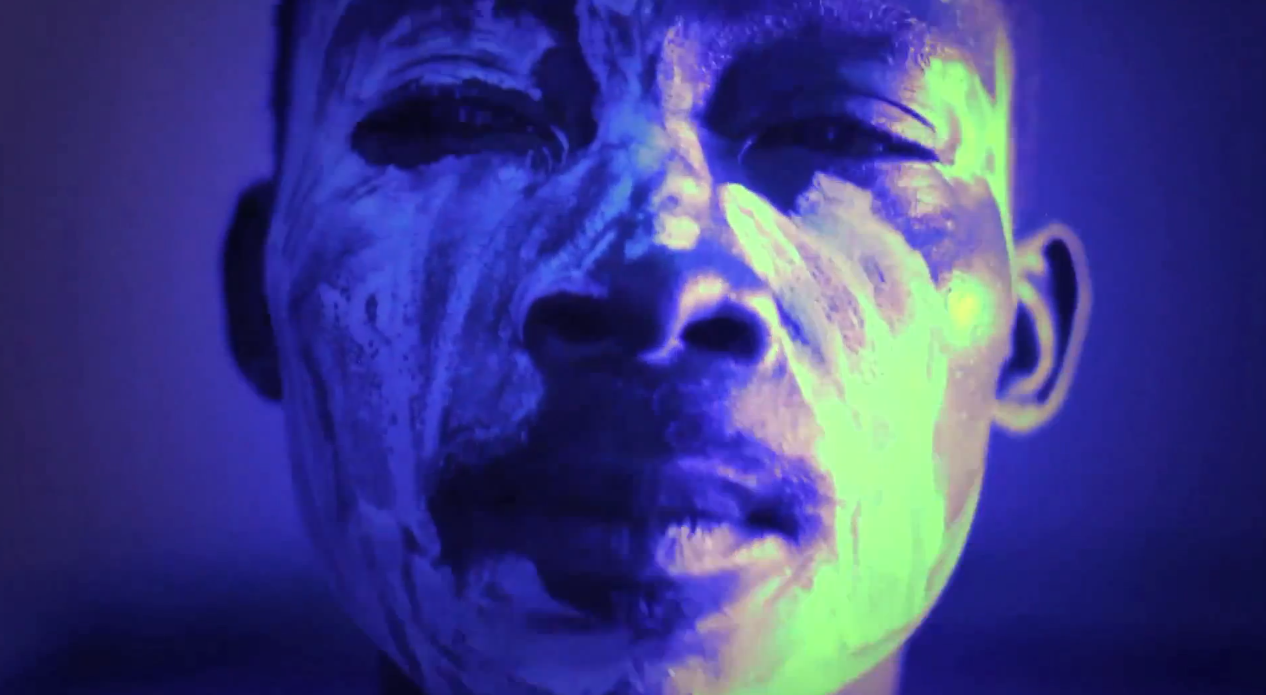
Protests against the continuous state-sanctioned police murders of Black, Brown, and Indigenous people in America haven’t only inspired a global dialogue about systemic racism, but they have also forced a reckoning with the legacy of White supremacy as it manifests across all facets of contemporary Western culture.
Club culture hasn’t been immune from these critiques. Writers have recently reminded of the Black protest legacy of house and techno music (as well as the cultural theft of these genres by White artists), and BIPOC artists of regional club styles have lamented the need to partner with White gatekeepers as a means of mainstream acceptability. This dynamic, of course, means that underground club music—despite its subversive, utopian ideals—fits within longstanding trends of White Western appropriation within music.
Still, even beyond that trend exists a deeper undercurrent of musical, pictorial, and even literal language which reflect some of the most insidious strains of White supremacist ideology. This is the ideology of imperialism and settler colonialism, which has caused such profound epistemic, ontological, and cosmological violence across the Global South that its structure has pre-empted the kind of solidarity and singular liberatory practices that the dance floor promises.
That undercurrent can be found within the White Western conception of “tribal,” which permeates across club genres, from house and techno to the amorphous umbrellas of UK and global bass. It’s a concept born of degradation and remains as such in club music, through primitivist depictions and exploitative collaborations; and while the Internet has ushered new hybridized forms of cultural relations that transcend borders, people within the club ecosystem can still seek and support opportunities for rematriation of Indigenous lands.
The lexicon of “tribal”
To speak a language is to take on a world, a culture.
Frantz Fanon, Black Skin, White Masks
Club music has its own way of codifying language, through the institutionalization of grassroots genres and descriptor. The nomenclature within Attack Magazine‘s “Beat Dissected” series is a brilliant example of the process by which the words used to describe music transition into aspirational guideposts for how those microgenres are then produced.1 This cycle of social reproduction means the language people use to describe music matters, for any colonizing ideology embedded within that language will ripple into the creative psyche of artists.
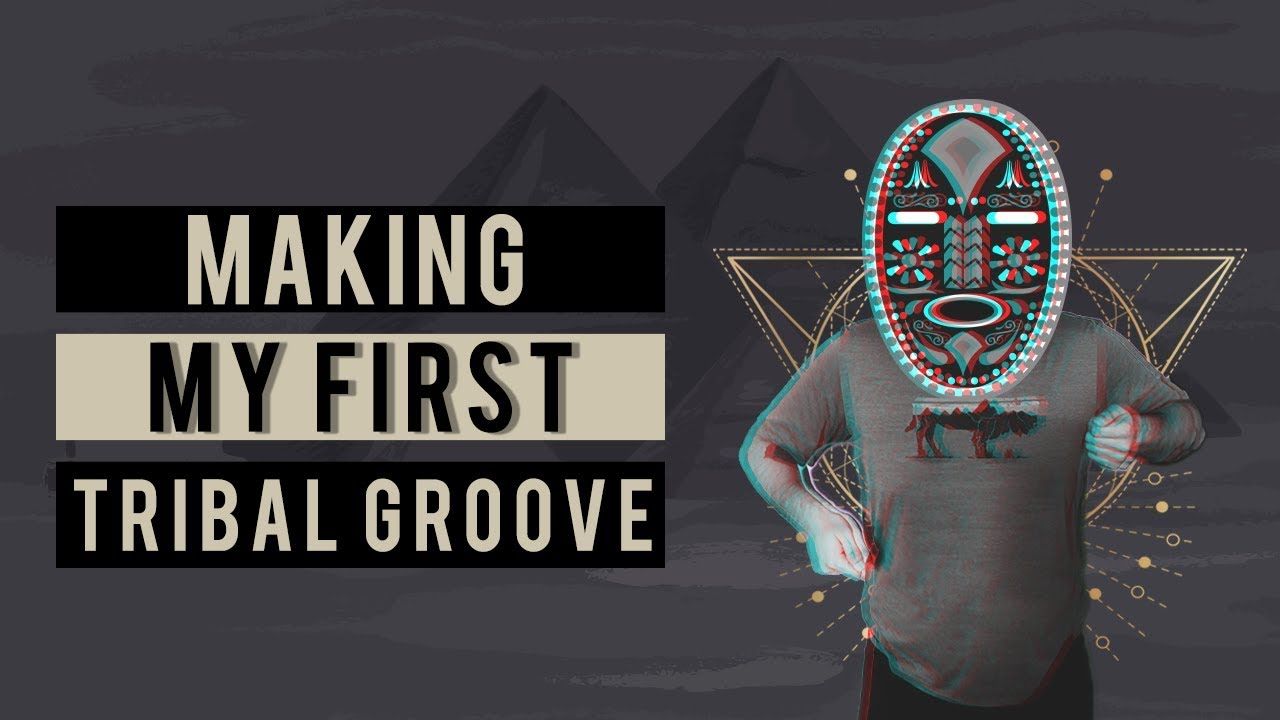
The word “tribe” derives from the Latin term tribus, the three main administrative divisions and voting units of ancient Rome. Starting in the 16th century, the word grew more and more racialized until, as Chris Lowe of the Africa Policy Information Center describes, “tribe” fully emerged in the 18th century from eugenicist theories of social evolution, first wielded as a cudgel of settler colonialism over American Indigenous people and later becoming racialized to justify slavery and economic domination across the African continent. Its legacy remains, only slightly mollified, and nonetheless dangerous.
Yet today most scholars who study African states and societies—both African and non-African—agree that the idea of tribe promotes misleading stereotypes. The term "tribe" has no consistent meaning. It carries misleading historical and cultural assumptions. It blocks accurate views of African realities. At best, any interpretation of African events that relies on the idea of tribe contributes no understanding of specific issues in specific countries. At worst, it perpetuates the idea that African identities and conflicts are in some way more "primitive" than those in other parts of the world. Such misunderstanding may lead to disastrously inappropriate policies.
Chris Lowe, "Talking about 'Tribe': Moving from Stereotypes to Analysis"
Lowe echoes Fanon's words about language and "taking on the world" in his elaboration of why this word is so often reflected back to Whiteness from people within the African diaspora. When people in Africa learn English, he explains, they are commonly taught that "tribe" is the term that White English-speakers can understand, and thus will come to expect. This is even as their own language, as is the case with the Zulu people of South Africa, may describe ethnocultural groups with a word, isizwe, that is more equivalent to "nation" or "people."
For the Aztec people, White European colonizers reframed tribe from the Náhuatl word calpōlli, which translates more literally to "great house." The racial hierarchization of "tribe" has since become bureaucratically codified in American land treaties, through commissioners who spitefully refused to deviate from that language. Overall, the equivalent to "tribe" in many languages is typically not self-ascribed and normally used as a pejorative term by outsiders, far from the dignity inherent in Indigenous terms for identification.
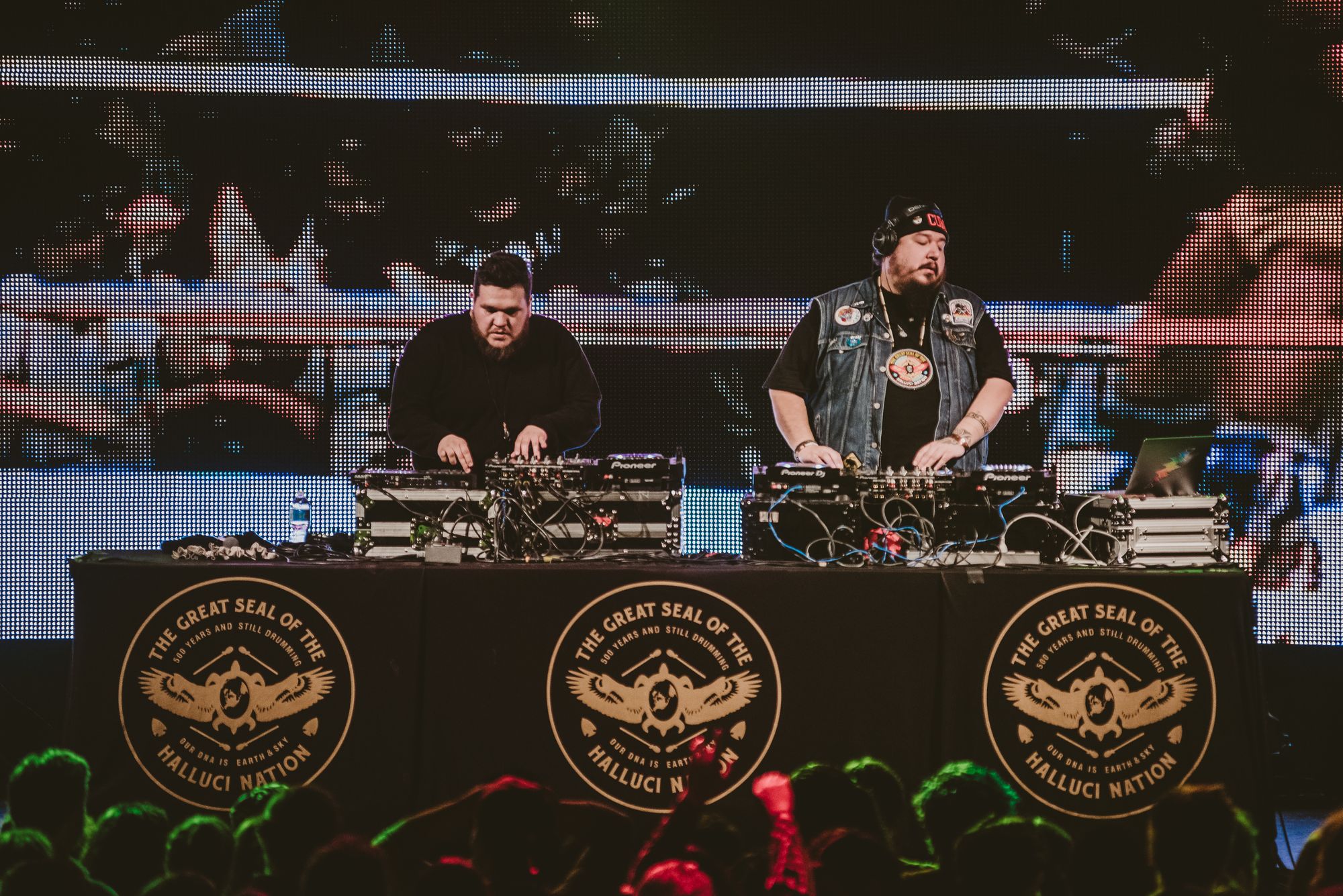


Nonetheless, a number of artists and scenes have emerged in opposition to the assimilationist psychopathology enforced by colonialists through language, as Fanon described in his 1952 book Black Skin, White Masks, reappropriating the word in the name of justice and revolution. Based out of Ottawa, the group A Tribe Called Red adopted the name to signify the phenomenon by which powwow drum groups would name themselves, pan-Indigenous solidarity movements, and the social justice orientation of one of the most legendary groups in hip hop. In Monterrey, Mexican teenagers built a community around pre-Hispanic club sounds, within a genre dubbed tribal guarachero. The UK funky production duo Tribal Brothers literally adopted a white mask, hearkening to post-colonial symbolism, for the cover of their 2020 EP "Rebellion."
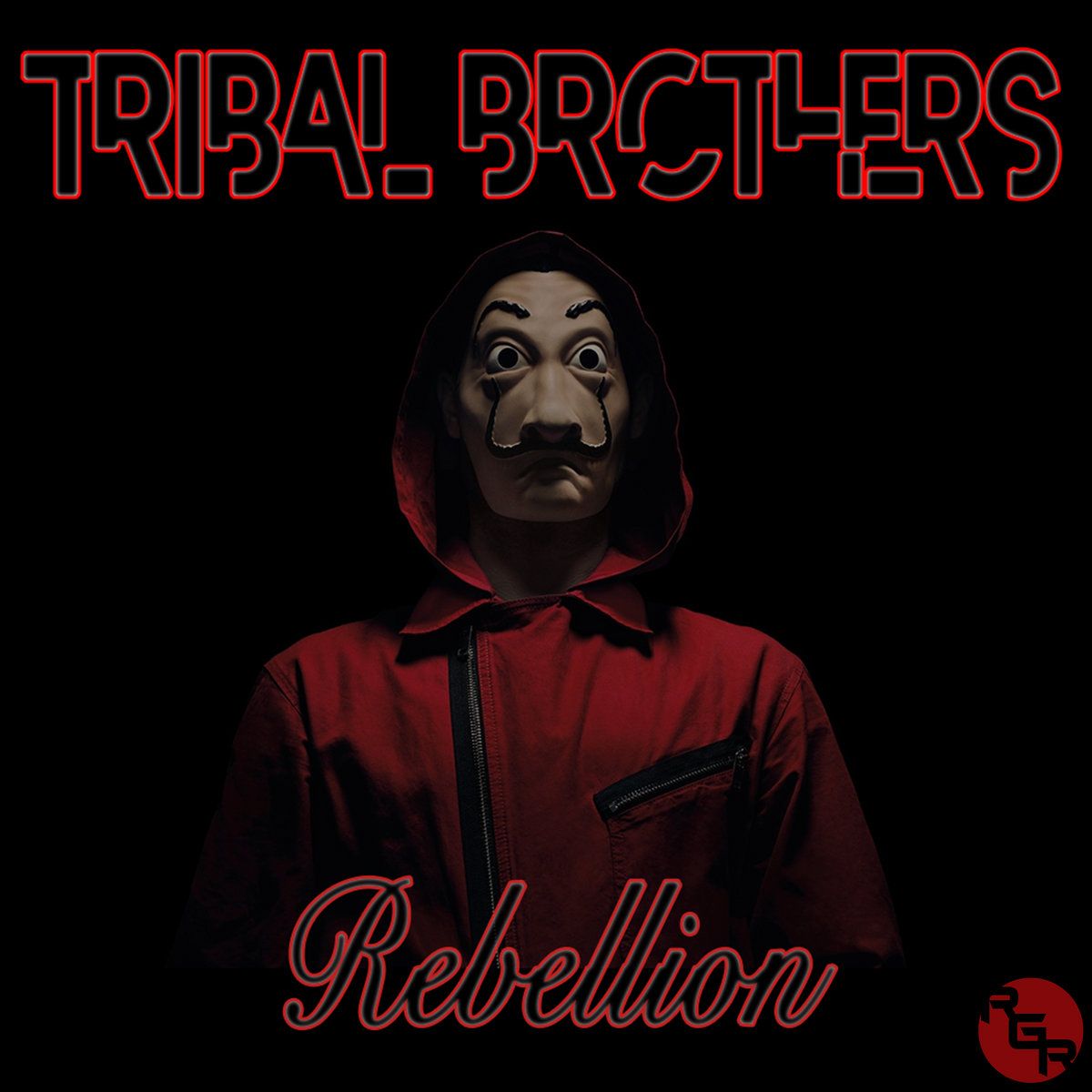
It is incumbent, then, upon White people within club culture to deprecate the word "tribal" from their own genre vocabulary, so the word can remain strictly within this diasporically-reappropriated domain. Otherwise, "tribal" will continue to be socially reproduced as a signifier by which new DJs and producers shape their sound—and by extension reduce a culturally-diverse world to a pan-African or pan-Indigenous primitivism. This extends to all elements of White Western hegemony within the club music ecosystem, whether multicultural branded content (a la Smirnoff's "Tribes" documentary series) or the White liberal colorblind ethos that pervades club music culture (as exemplified in Tribe Records' motto: "one sound, one people, one tribe"). If club culture is truly going to move forward as a liberationist movement, its vocabulary and symbolic representations must rebuke this colonialist frame.
Global club, musical language, and the colonial psyche
A case study for how White supremacist, colonialist ideologies surface in club music under the auspices of the "tribal" descriptor, the Toulouse-based Rémi Kaval's Triby Balad EP emerged with a self-professed "tribal side." Situating his music within that linguistic construct, Kaval proceeds to engage in a nativist fantasy which eschews solidarity in favor of constructing a sonic landscape that implants the White supremacist logic of colonialism through musical language.
In the introductory track "Jumbo," syncopated snares form polyrhythms with hand drums and percussive rolls. Men grunt and yelp, birds hoot, elephants trumpet, and unknown animals form a patchwork of guttural growls. By many measures, it creates a striking, hard-hitting rhythm that serves as an effective example of the burgeoning "hard drum" genre. But by the measure of its calculated exoticism, it soundtracks the colonialist legacy of human zoos, as depicted in this archived picture from the Illustrated London News.
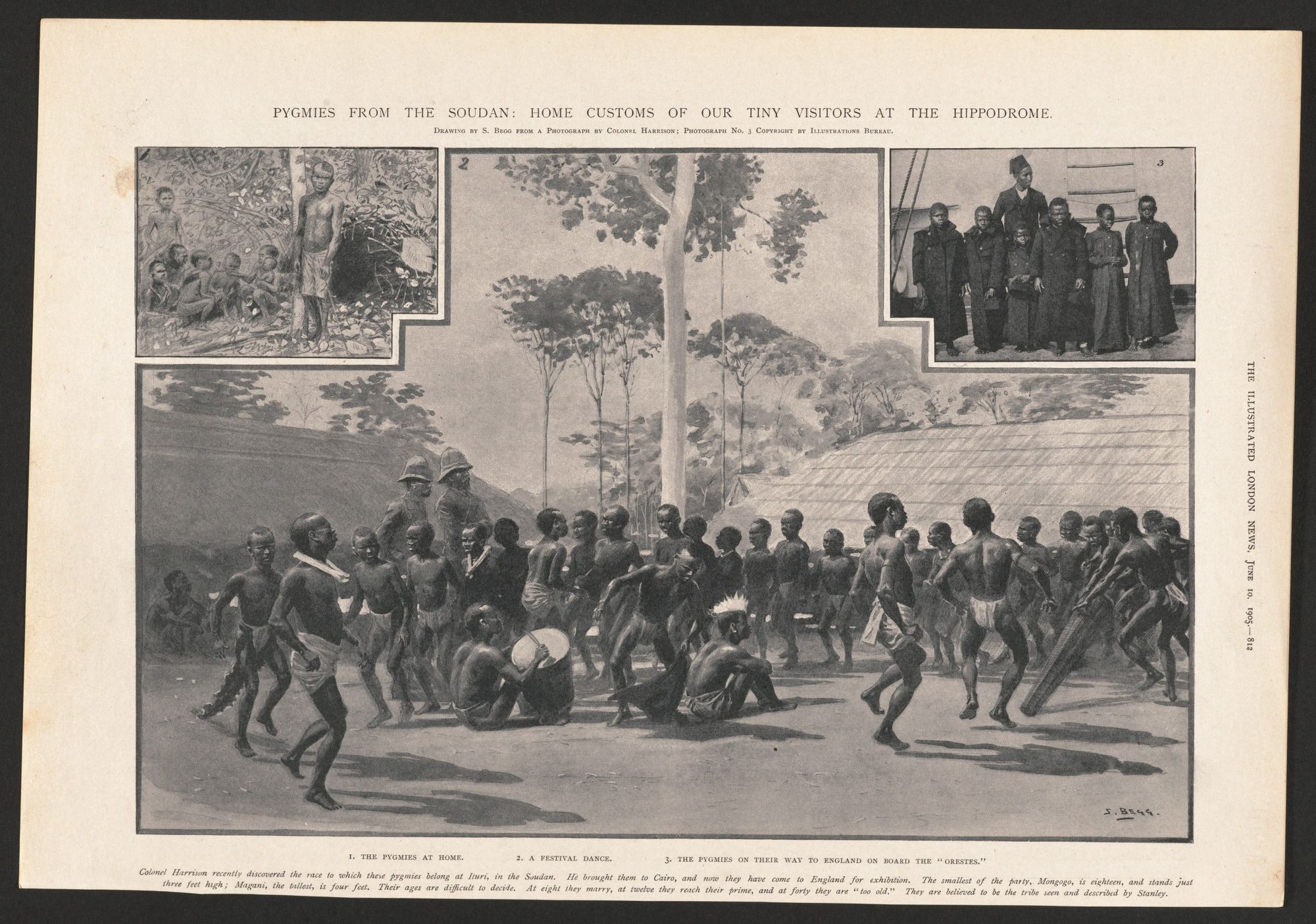
While club music may not be a literal representation in word or visual, Kaval's sample selection allows "Jumbo" to showcase musical language that, in Kaval's own description of the track, "plunges us into a primitive era." Fanon describes the colonizing ideology as casting the Global South into a "jungle status" from which they must be "elevated." Here, the "jungle status" of people subject to colonization is reinforced as Kaval sonically constructs a jungle, punctuated with wordless vocables of vague African origin.
The effect here is to maintain Africa, and by extension the Global South, as a permanently colonized settlement, in psyche if not in governance. It maintains as the "White man's burden," as penned by The Jungle Book author Rudyard Kipling. It is the "shithole countries" by which White nationalist leaders across the Western world impose their framework of racial hierarchy. When Kaval suggests that the EP, in all of its various African signifiers, is "like a walk on an unknown wild & hostile land," he sings modernity's siren song of imperialist aggression.

White Western producers may claim no ill-intent, that the primary goal is simply to construct beats and sonic landscapes by which club goers can lose themselves to dance. Yet, as Fanon continues to describe, the casual disregard for the colonial underpinnings of those landscapes is exactly that which may deserve the most hostility.
But, I will be told, there is no wish, no intention to anger him. I grant this; but it is just this absence of wish, this lack of interest, this indifference, this automatic manner of classifying him, imprisoning him, primitivizing him, decivilizing him, that makes him angry.
Frantz Fanon, Black Skin, White Masks
The power of sampling, and its lasting allure as a means of creative expression, is the ability to bring old sounds into new contexts. Yet, under the banner of "tribal," White producers subvert that power by bringing old contexts—namely, colonial White supremacy—to new sounds.
Hybridity and the colonial collaborator
Even in the absence of the word, and even as White producers may work from recorded collaborations in lieu of decontextualized samples, their aesthetics may yet reveal new forms of colonialist framing that intensified through the mid-20th century, as televised mass communications networks and commercial aviation accelerated the level of cultural interconnectedness wrought by globalization.
During this same period, post-colonial theorists began developing perspectives that complicated binary conceptions of colonialism as a purely oppositional relationship between "settler" and "native" into one in which cultures "hybridize," or as the theorist Homi Bhabha describes it, create a "third space" of interstitial discursive territory between Western colonizing cultures and those of the Global South.
[T]he process of cultural hybridity gives rise to something different, something new and unrecognizable, a new area of negotiation of meaning and representation.
Homi K Bhabha, The Location of Culture
Born to parents who immigrated to the United States from the Sierra Leone, DJ and writer Boima Tucker aka Chief Boima has experienced this interplay through his experience growing up in the rust belt of the American Midwest, DJing clubs across the world, and working to build equitable and sustainable music cultures in Sierra Leone and beyond. In his research on the interplay between hip hop, youth, and politics in contemporary Sierra Leone, Tucker provides an example of how hybridity developed from the colonial era, an example that—in his words—characterizes the relationship between Africa and the West not just as a dichotomous other, but as “a constant interplay and exchange between the two, with European cultural practices shaping African ones and vice versa.”
When thinking, then, about the “meanings and representations” constructed in the interplay of this third space, one can examine the work of The Busy Twist, a (former) duo of White Londoners whose 2014 EP Labadi Warriors emerged out of vocal and percussion recordings of the Labadi Warriors drum group from Accra, Ghana. This analysis demonstrates the limits of collaboration when forging hybrid club music and questions the role of Whiteness within the discursive framework of the global dance floor.
In the title track “Labadi Warrior,” The Busy Twist blends the Labadi Warriors’ chanting calls and percussive responses with a wobbly, LFO-addled bassline, all punctuated with the kind of off-kilter snare pattern emblematic of the genre. While the music itself doesn’t descend fully into the primitivization of a track like “Jumbo,” forgoing syllabic grunting for local languages and Ghanaian Pidgin English, the visuals for its music video—shot and edited by the group’s members Gabriel Benn and Ollie Williams—nonetheless discloses the exploitative ethos that fuels White Western colonialism and imperialist expansion.
The music video, which has since been taken down by the group, features the Labadi Warriors painted as though at a Kundum festival. They dance, chant, drum, and occasionally twirl fire sticks under a vacillating array of ultraviolet bulbs that illuminate the paint, blue gels that contrast the fire, red gels the color of clay, and finally low-key lighting that shrouds the Ghanaian group in darkness. The Busy Twist, by contrast, do not portray themselves in the video at all and accompany the press with a high-key image in casual urbanwear that portrays them bathed in white.

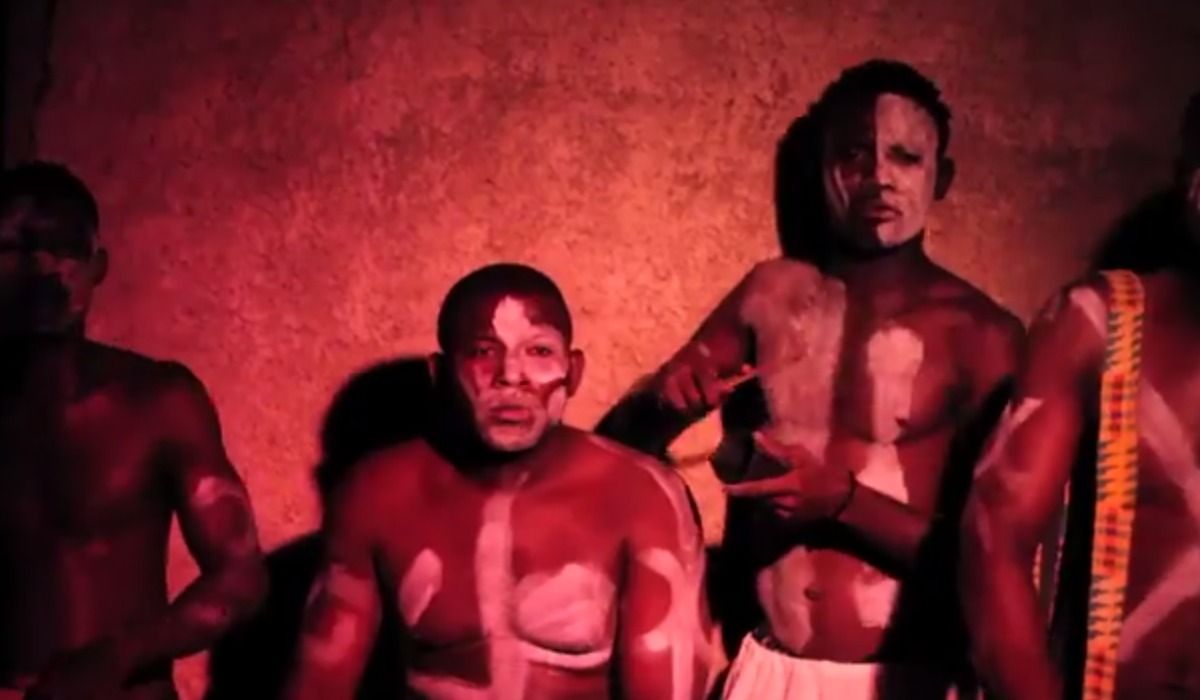
Through these symbolic gestures, The Busy Twist aligns its vision of cultural hybridity with the processes endemic to colonial imperialism, exploiting the labor and resources of transcontintental artists. Far from liberationist, “Labadi Warrior” instead echoes an experience Jace Clayton aka DJ /rupture documented in his book Uproot: Travels in 21st-Century Music and Digital Culture watching the band Yilila perform in 2009 at WOMEX, a showcase of the institutionalized economy of “World Music.”
The music was anodyne, but what really rubbed me the wrong way was how the band had assigned duties. The white guys got to wear Western casual. The aborigines? They had thongs and face paint (and little else). The onus of authenticity, so important to World Music audience-performer dynamics, lay on them. The brown guys. Demonstrating one’s authenticity is work, after all, so this division of labor struck me as lopsided, especially considering that their music was based on a fusion approach where mix-and-match was king. Why didn’t the visuals reflect that?
Jace Clayton, Uproot: Travels in Twenty-First-Century Music and Digital Culture
The Busy Twist, in this way, serves as a case for how Whiteness can attempt to engage in the colonial project within these interstitial hybrid spaces, far from the utopian ideal by which Bhabha conceived them. Instead, hybridity becomes a pipeline for what Boima Tucker calls “global genre accumulation,” the exploitative process by which White intermediaries benefit from the novelty of claiming to have discovered a musical form or a level of proximal authenticity. In his book, Jace Clayton similarly bemoans how “powerful centralizing figures” can “swoop down to capitalize on the messy undercurrents” that carry the formation of hybrid cultures.2
Now the solo project of Oliver Williams, The Busy Twist’s own “About” page (presumably written by Williams himself) parallels the internal dialogue of Charles Marlow, the “noble” imperialist from Joseph Conrad’s Heart of Darkness. Reinforced with a press photo that retains the casual comfort and exotic backdrop of a British colonial administrator while wearing clothes that match the color scheme of the local dwelling, the language positions London as the site wherein the “infectious” and “raw” rhythms of the Global South become refined through “meticulous” skills.

He is no stranger to recording in uncharted territories, having spent the last decade travelling in search of the deepest sounds from the pacific and Caribbean coast of Columbia to the most infectious rhythms from the bustling streets of Ghana West Africa, and Bongo Flava of Tanzania in East Africa to Socas energy of St.lucia. Bringing it all together in the London studio with meticulous and refreshing production skills to turn the raw tropical rhythms and engineer the sonics into sound system shaking bangers.
Oliver Williams, TheBusyTwist.com

Now when I was a little chap I had a passion for maps. I would look for hours at South America, or Africa, or Australia, and lose myself in all the glories of exploration. At that time there were many blank spaces on the earth, and when I saw one that looked particularly inviting on a map (but they all look that) I would put my finger on it and say, “When I grow up I will go there.” The North Pole was one of these places, I remember. Well, I haven’t been there yet, and shall not try now. The glamour’s off. Other places were scattered about the Equator, and in every sort of latitude all over the two hemispheres. I have been in some of them, and… well, we won’t talk about that. But there was one yet—the biggest, the most blank, so to speak—that I had a hankering after.
Joseph Conrad, Heart of Darkness
In this way, the Busy Twist’s mode of hybridity reflects how latent White supremacy can infiltrate this “third space,” not with equitable collaboration, but with symbolic gestures toward Marlow’s own belief in the “remote kinship” between him and the inhabitants along the Congo River—all while trafficking in “tribal” symbolism that engages exploitive modes of representing African, Indigenous, and other colonized people. Such representations reflect the colonialist worldview embedded in Marlow’s descriptive litote of the indigenous Africans as “not inhuman.”
Models of liberation
Transnational collaborations spurred by travel may often3 replicate colonial or imperial relationships— reinforced by the asymmetric privilege by which people physically move across borders. However, the flattening of transnational communication networks via the Internet has fostered a vast array of decentralized nodes by which producers, DJs, and listeners across the globe find sounds, connect, and share within a space of virtual hybridity. Jace Clayton calls this “World Music 2.0,” by which “all the world’s sonic secrets are out there, clumped irregularly across the Internet’s flat and mighty sprawl.” It is within this space that the process of music production can move toward a liberatory framework by subverting colonialist and capitalist paradigms and denaturalizing the White Western hegemony that “tribal” invokes.
Across the world, a number of club music collectives have coalesced around the new possibilities wrought by this framework, from the uplifting Nyege Nyege out of East Africa to the subversive digital diaspora of NON Worldwide, challenging colonial structures of how music is produced and repudiating the White gaze. In the article “More to the Floor: The Decade the Dancefloor was Decolonised,” the writer Whitney Wei summarizes how these crews have used the flattened expanse of “World Music 2.0” to reach Bhabha’s conception of the liberationist “third space” that hybridity can ideally bring into being.
Perhaps partly helped by the global panopticon of the internet, new generation DJs and producers like these combine everything from the weighty syncopations of footwork to the sparse, percussive rolls of gqom and euphoria of hard trance, until the key compounds are almost unrecognisable – and then add their own distinctive local flavour. The result is a simultaneously global and local sound, and cross-continental collaborations are making it even more cosmopolitan.
Whitney Wei, “More to the Floor: The Decade the Dancefloor Was Decolonised”
The DJ and producer Zutzut, an affiliate of the anarchic club collective N.A.A.F.I., based out of Mexico City, showcases this in his CDMX TAPES mix from April 2019. As local and regional styles of dembow, reggaeton, and guaracha provide a rhythmic foundation for the mix, the sounds of diasporic mainstream artists float in and out. Jennifer Lopez is drenched in reverb, Beyoncé is time-stretched, and the chords of “Gypsy Woman” are introduced out of tune from the rest of the sonic environment, denaturalizing the White hegemonic power of the English-language world.
As Lenin called colonial imperialism the “highest stage of capitalism,” the formation of these groups as collectives may be a critical element of their anti-colonialist stance. Through egalitarianism and consensus, collectives reject the hierarchies by which value is appropriated and wealth distributed under capitalism; in this way, collectives actively reject the racial hierarchies that serve as the foundation of the colonialist project and restructure how people relate to each other. As NON WORLDWIDE member Nkisi shared in a 2018 interview with The Guardian: “The beauty of collectives is that they’re a constant experiment. In a weird way, they’re like research on how to be with other people.”

Facilitated by the Internet, groups like STAYCORE form a multiracial, multiethnic, and multinational coalition of club music producers and DJs. This model of collective ownership subverts a White Western culture predicated on, as W.E.B. DuBois describes, “ownership of the earth forever and ever, Amen!” Thus, when STAYCORE DJ and producer Dinamarca (in a 2017 interview) describes the name as originating from the idea that one should “stay true to your core and be true to yourself,” it reframes the ontology of Whiteness for such members as existing beyond the socially reproduced colonialist paradigm and toward collective liberation.
Decolonizing dancefloors: beyond metaphors
While many of these Internet-facilitated models subvert the relational paradigm of cultural imperialism as it pertains to regions of the world, the brick-and-mortar dance clubs they inhabit—particularly those in the Americas, Pacific Islands, and Australia—remain on land that has been dispossessed by White Western colonizers. Without reckoning with this particular element of settler colonialism, as explained by scholars Eve Tuck and K Wayne Yang in the now-seminal text “Decolonization Is Not a Metaphor,” club music culture would indefinitely remain complicit in a “settler future.”

The importance of this principal is illustrated in the Shanghai club Shelter, the community base of the hybrid experimental club label SVBKVLT. Though China often remains unmentioned in such discussions, it remains its own history of imperial subjugation and colonization by the West (as well as Japan). The location of the club, itself a Cold War-era nuclear bunker, is the French Concession, a tract within which the French established bureaucratic control and dispossessed the Chinese people of land rights until it was rematriated in 1943. If not for land and control being ceded back to the people of China, this nexus of contemporary Chinese club music and culture may not have found space to exist.
Moving forward, White Westerners within club music communities should use their considerable resourcefulness in accessing buildings and land to serve as an agent of land reparations and Indigenous solidarity. Prospective venue owners and club promoters could form relationships with Indigenous communities to coordinate a practice which acknowledges and begins to redress the history of land theft, potentially with an agreement akin to the land trust model that cedes land while maintaining building access. Resources exist for how to initiate the process of land reparations, with acknowledgment of the complexities involved—and with a reminder of the primacy of Indigenous sovereignty throughout. At the very least, club DJs can begin the discourse by beginning sets with land acknowledgements, culled from crowdsourced resources of Indigenous territories.
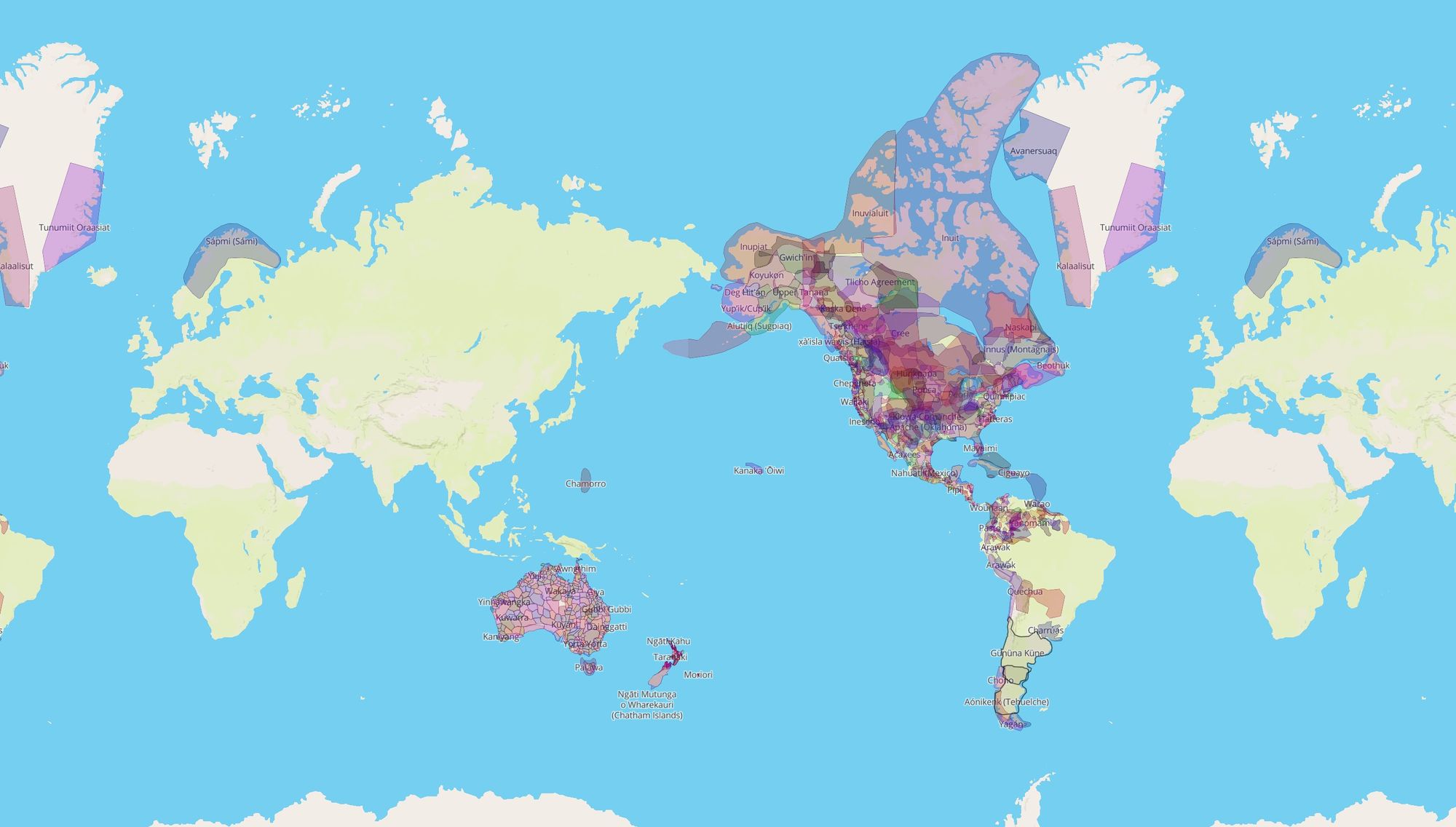
Of course, the inherent tension here is that such land-based redress is incommensurate with club culture’s own storied founding by Black artists, who crafted club music as a metaphysical refuge from the legacy of dispossession wrought by the trans-Atlantic slave trade. White people must engage in productive struggle against the recursive structures White supremacy has crafted to undermine solidarity in the global project toward decolonization and racial justice—structures by which Indigenous people in America oppose land reparations for Black people as a settler colonialist project while recent history shows that European settlers acculturated certain Indigenous nations into the same practices of enslaving Africans that founds the case for material reparations. This need for material reparation (and its ensuing tensions and contradictions) exists across the White Western world.
The potential for global club music culture to adopt a practice of pan-diasporic collaboration and resistance against White supremacy and Western colonialism—accepting incommensurability and persisting despite the barriers—remains murky, if emboldened. Regardless, if club music wishes to overcome the latent exploitation, degradation, and dispossession that persists within White Western colonial frameworks of club music production, it must move forward in opposition to the symbolism through which those ideologies are encoded. It’s long past time for White people to shed the vestiges of “tribal” from their vocabulary—in word, visual, and sound.
To support artists and labels actively promoting an anti-colonialist ethos within the global club music community (many of whom are featured here), please check out my Anti-Colonial Club list on Buy Music Club.
1. For more examples, look at the nomenclature of the sample packs that form the building blocks of how many producers create their tracks.
2. While this comment specifically refers to Clayton's conception of "World Music 2.0," discussed later in this post, it can also retroactively apply to the decentralized networks of local music communities that existed globally prior to the Internet.
3. For an example of a collaborator who actively resists these asymmetries and takes an egalitarian stance, please reference Chief Boima’s collaboration with Sorie Kondi.
